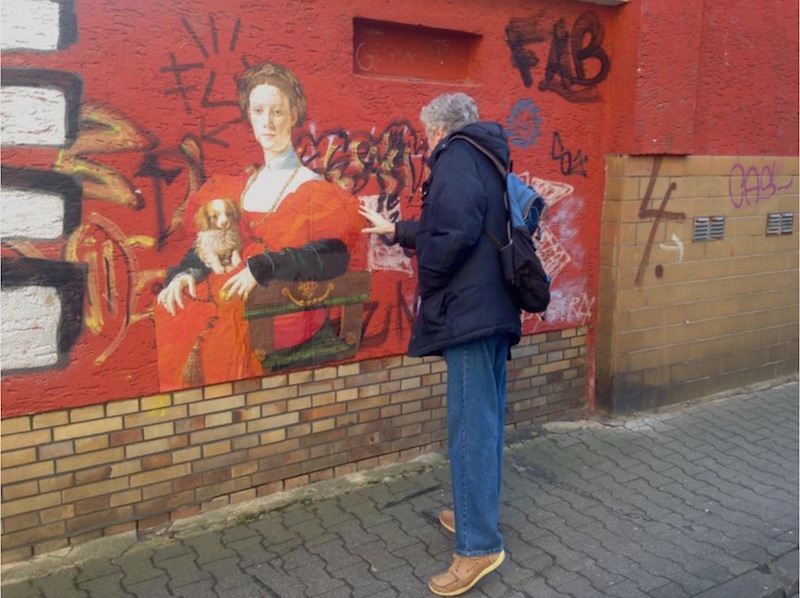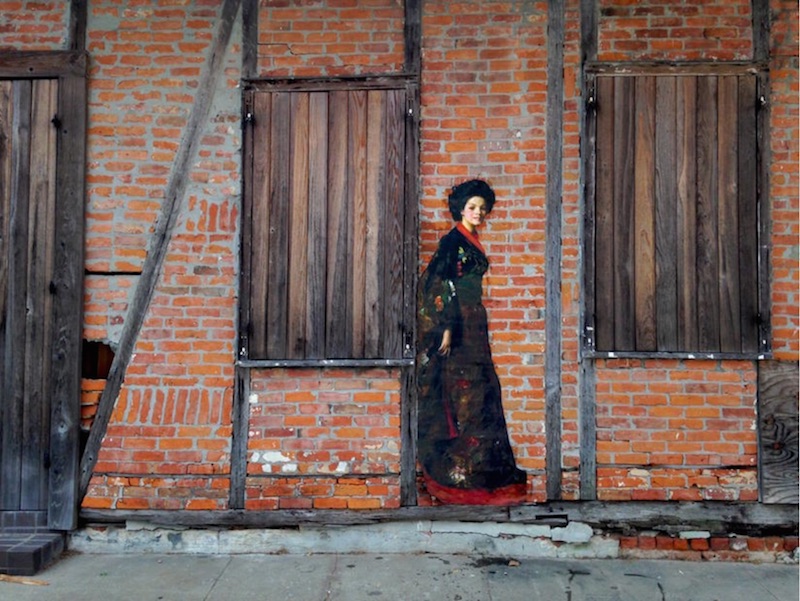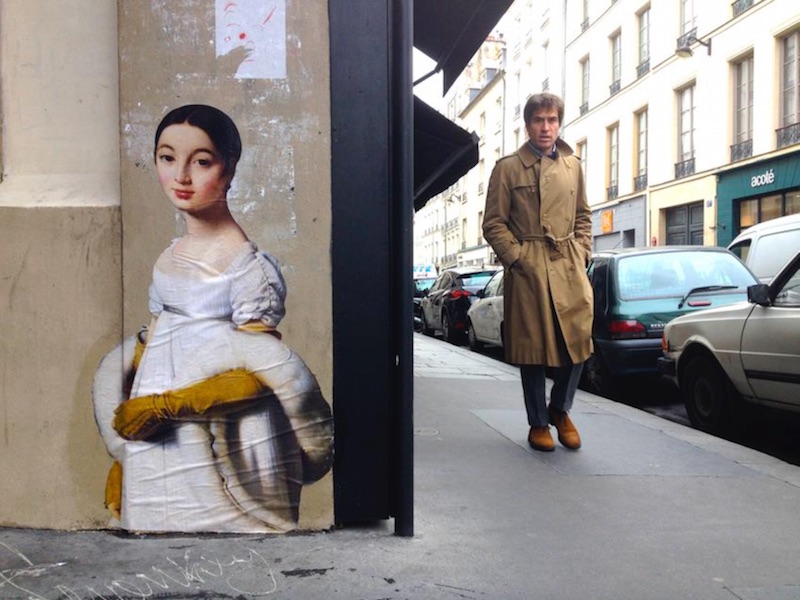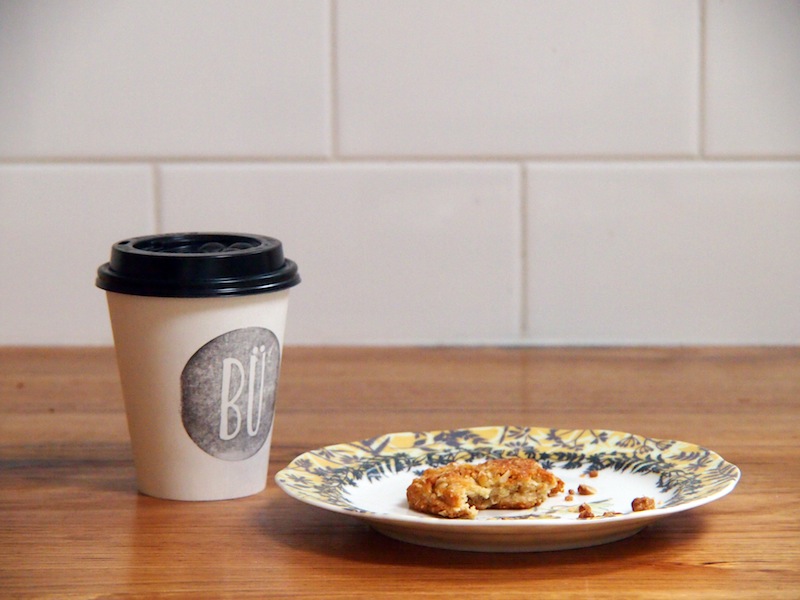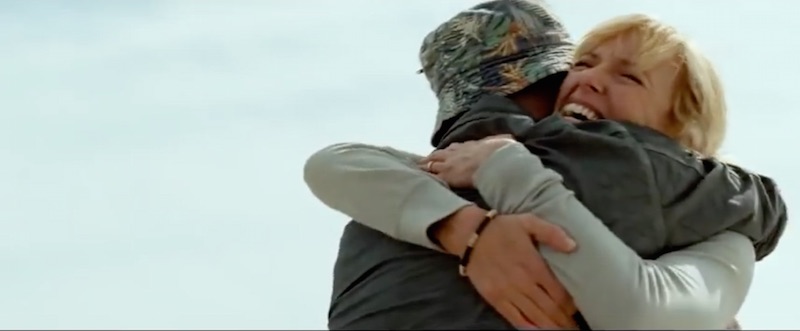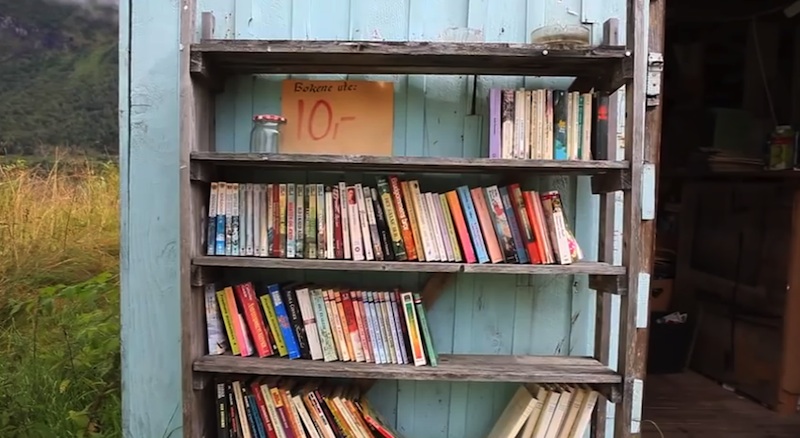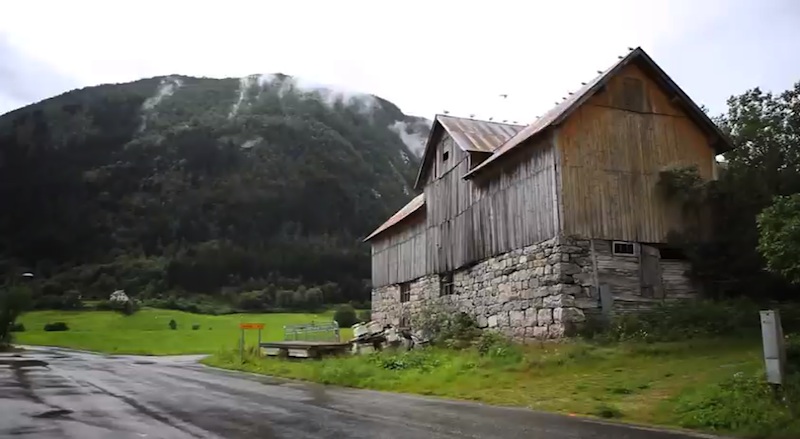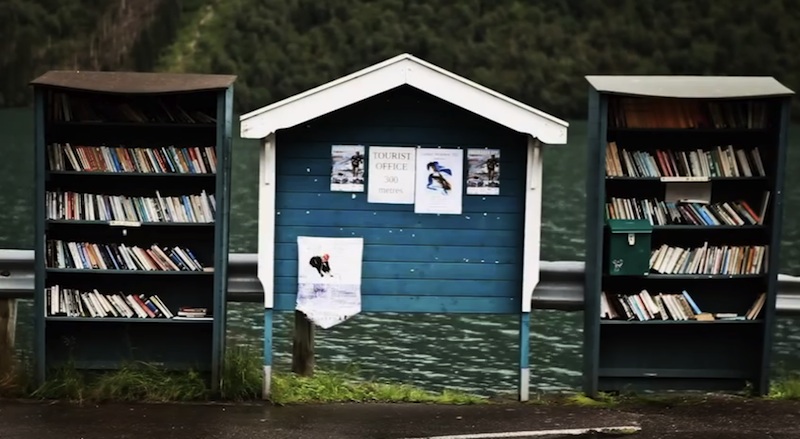
JOURNAL
documenting
&
discovering joyful things
30 letters in 30 days: the tally
What do the Dalai Lama, Dame Judi Dench, and US President Barack Obama have in common? They all received a letter from me last month. (I can’t tell you why I wrote to these good folks because the interviews I sent are part of a surprise for a friend and she sometimes reads this blog. You’ll just have to use your imagination.)
I’m proud to say that I met and even surpassed the "30 letters in 30 days” challenge I joined for the month of April. I know a lot of people associate me with snail mail and therefore think this might not have been that big a deal but, when you consider that some people have had to wait as long as six months to receive a letter or reply from me (yes! I’m so sorry!) you’ll see why I’m proud of reaching this goal.
How do you write letters? Normally I prefer to wait to write and send my mail when I have an extended batch of "me-time," so that I can really put some thought into it and give it my full attention. However, those batches of time are few and far between these days.
It was quite a different discipline to force myself to write and post mail every day during April, even if it meant writing during stolen moments at the kitchen bench, waiting for the children’s spaghetti to cook. Some of my letters had little splotches of food or ink or toddler fingers on them, and I hope the recipients will forgive me and know it meant I was prioritising writing to them, no matter what.
Here’s who I wrote to last month:
2 x letters to Mr B (one from me, and a postcard from Scout, while he was overseas)
1 x letter to a family friend who we haven’t seen in a while
1 x parcel of tea for a lovely woman in Norway (pictured above)
2 x bundled up gifts to the children of a blog reader (also pictured above)
20 x mail-art packages for blog readers
12 x snail-mail interviews to Dame Judi Dench, the Dalai Lama, Barack Obama and ‘friends’
1 x letter to Ralph’s daycare teacher
Grand total: 39 letters in 30 days. Huzzah!
Writing this way was actually a good process in self-discipline and, as the weeks went by, I found it easier to sit and write just for a short time, rather than needing the long blocks of time I usually prefer. Because it became easier to write piecemeal, I started to get through a whole lot more mail as the month went on. Don’t get me wrong, I’m still WAY behind in the letters I need to send to you lovely people, but I’ve made a good dent in the “to mail” pile.
Did you join this challenge? How did you go?
Art outside
Here is an incredible, international, project that is bringing art to the streets, and you can get involved. Yes, even you. People all over the world are visiting galleries, snapping photos of overlooked or forgotten portraits, and replicating them in the streets of their cities.
It all started with French artist Julien de Casablanca, after an abandoned painting of a woman in a corner at the Louvre caught his eye. “I had a ‘Prince Charming’ impulse,” he told Slate.com, “I wanted to free her from the castle to give her a second life.” He took a photograph of the painting, printed it onto large-format paper, and pasted it onto an urban wall.
Since then, the project has become a global participative project called Outings. Any of us can take part, by going to our own local galleries and snapping photographs, preferably of anonymous (and therefore possibly forgotten) portraits. The Outings team can edit and/or print the photograph for you, or you can find someone local, then you simply paste it to a wall in your city, using wallpaper glue and a brush.
The full guidelines are on the website, including tips for keeping this kind of public art legal (rather important).
Now, you and I can become street artists, AND share some of the masterpieces of the past with people who might not have the time or inclination to make their way inside the local gallery.
That’s quite lovely, don’t you think?
Image credits: art given a new lease of life in (from top to bottom) Frankfurt, New Orleans, Paris, Rio de Janeiro, and Warsaw. Used here with Julien’s kind permission
ANZAC biscuit recipe
 This morning Scout and I whipped up a couple of batches of ANZAC biscuits. We made the monster-sized ones you see here for us to eat on the weekend (and one for me at morning tea), then another batch of slightly more reasonably-sized biscuits to take to her friends at daycare. She was bursting with pride.
This morning Scout and I whipped up a couple of batches of ANZAC biscuits. We made the monster-sized ones you see here for us to eat on the weekend (and one for me at morning tea), then another batch of slightly more reasonably-sized biscuits to take to her friends at daycare. She was bursting with pride.
Growing up, we always had two great recipes for ANZAC biscuits, and I made these using the one of them I still have. I don't actually know if this is Nanna's family recipe, or the one Mum got from the Wideview School Fete in the 1980s, but either way it is quick, easy, and the biscuits always taste delicious.
Ingredients:
* 1 cup rolled oats * 1 cup flour * 1 cup sugar * 3/4 cup coconut (I prefer shredded though the biscuits you see in these photos used desiccated) * 1/2 cup butter, melted * 2 tablespoons Golden Syrup * 1 tablespoon boiling water * 1 teaspoon bicarbonate of soda
Method:
1. Preheat the oven to 160 decrees Celsius 2. In a large bowl, mix together the oats, flour, sugar and coconut 3. Melt the butter in a small saucepan over the stove, then stir in the Golden Syrup 4. Add the bicarb. soda to the boiling water, then pour it into the melted butter mixture (if you are cooking with kids, they will love this part because it goes all frothy like a science experiment) 5. Pour the butter mixture over the dry ingredients and mix well 6. Shape the mixture roughly into balls and place on a greased baking tray (allow room for the balls to flatten and spread as they cook) 7. Bake for up to 20 minutes, checking regularly for colour and turning if necessary
Make sure you don't overcook the biscuits. Base your estimation of their "doneness" on the golden colour. When you pull them out they'll still be smooshy but don't worry, they'll firm up as they cool down. I like my ANZAC biscuits soft in the centre but if you want them to be crunchy, give them a couple of minutes longer.
ps. Have you ever wondered how ANZAC biscuits came about? They used to be called Soldiers' Biscuits, and were created by mothers and wives and girlfriends to help give their loved-ones the nutritional benefits of oats during the long sea voyage to the front. You can read the story here.
8 books about snail mail
 Do you want to read somebody else's mail? It's not a crime if the letters are in a book! If you’re looking for something to read and are feeling nostalgic for a bit of old-school snail-mail, here’s a list you might enjoy, of some of my favourites.
Do you want to read somebody else's mail? It's not a crime if the letters are in a book! If you’re looking for something to read and are feeling nostalgic for a bit of old-school snail-mail, here’s a list you might enjoy, of some of my favourites.
84 CharingCross Road by Helene Hanff
Why I like it: I picked up this book in a second-hand bookshop purely on the basis that the cover looked a lot like the cover of my own book Airmail, which had just come out. It turned out to be the most beautiful, heartwarming, true story of unlikely pen-pals, spanning decades.
On the back: 84, Charing Cross Road is a charming record of bibliophilia, cultural difference, and imaginative sympathy. For 20 years, an outspoken New York writer and a rather more restrained London bookseller carried on an increasingly touching correspondence. In her first letter to Marks & Co., Helene Hanff encloses a wish list, but warns, "The phrase 'antiquarian booksellers' scares me somewhat, as I equate 'antique' with expensive." Twenty days later, on October 25, 1949, a correspondent identified only as FPD let Hanff know that works by Hazlitt and Robert Louis Stevenson would be coming under separate cover. When they arrive, Hanff is ecstatic--but unsure she'll ever conquer "bilingual arithmetic." By early December 1949, Hanff is suddenly worried that the six-pound ham she's sent off to augment British rations will arrive in a kosher office. But only when FPD turns out to have an actual name, Frank Doel, does the real fun begin. Two years later, Hanff is outraged that Marks & Co. has dared to send an abridged Pepys diary. "i enclose two limp singles, i will make do with this thing till you find me a real Pepys. THEN i will rip up this ersatz book, page by page, AND WRAP THINGS IN IT." Nonetheless, her postscript asks whether they want fresh or powdered eggs for Christmas. Soon they're sharing news of Frank's family and Hanff's career.
Guernsey Literary and Potato Peel Pie Society by Mary Ann Shaffer & Annie Barrows
Why I like it: I was late to the fan club for this book. People kept telling me to read it and I could tell I would enjoy it but somehow I never seemed to get around to picking it up. Last week I went into Readings and asked for "The book with the guernsey and the potatoes" and they knew exactly what I meant. Now I'm half way through and just can't put it down.
On the back: “I wonder how the book got to Guernsey? Perhaps there is some sort of secret homing instinct in books that brings them to their perfect readers.” January 1946: London is emerging from the shadow of the Second World War, and writer Juliet Ashton is looking for her next book subject. Who could imagine that she would find it in a letter from a man she’s never met, a native of the island of Guernsey, who has come across her name written inside a book by Charles Lamb…
As Juliet and her new correspondent exchange letters, Juliet is drawn into the world of this man and his friends—and what a wonderfully eccentric world it is. The Guernsey Literary and Potato Peel Pie Society—born as a spur-of-the-moment alibi when its members were discovered breaking curfew by the Germans occupying their island—boasts a charming, funny, deeply human cast of characters, from pig farmers to phrenologists, literature lovers all.
Juliet begins a remarkable correspondence with the society’s members, learning about their island, their taste in books, and the impact the recent German occupation has had on their lives. Captivated by their stories, she sets sail for Guernsey, and what she finds will change her forever.
Written with warmth and humor as a series of letters, this novel is a celebration of the written word in all its guises, and of finding connection in the most surprising ways.
Airmail by Naomi Bulger (yes that’s me!)
Why I like it: I wrote this book and even after all these years, I'm still proud of it. It's about so many things that I love: snail-mail, storytelling, New York, love, and a little bit of magic in everyday life.
On the back: Reclusive old Mr. G.L. Solomon's favorite things are single malt whiskey, Steve McQueen movies, and gingersnap cookies. He hates processed cheese, washing detergent commercials, and the way the teacup rattles in the saucer when he picks it up. Solomon has become accustomed to his lonely routine in Sydney, Australia-until the day he begins sporadically receiving letters in his mailbox from a complete stranger. On the other side of the world, Anouk is a mentally delicate young woman living in New York who insists she is being stalked by a fat woman in a pink tracksuit. When Anouk declares to Solomon that she is writing "from the Other Side," the old man breaks away from his daily grind of watching soap operas and reading "Fishing World" and travels to New York to find her. As he is drawn into Anouk's surreal world of stalkers and storytelling, marbles and cats, purgatory and Plato, Solomon has but one goal-to unravel the mystery before it is too late.
Possession by A.S.Byatt
Why I like it: Romance and mystery, unfolding piece by piece in letters, notes and poems. I love that the written word can contain and keep alive powerful emotions - like love and possession - long after the lover is gone. And I love the idea of notes and letters, scattered throughout history as clues left for the future.
On the back: Possession is an exhilarating novel of wit and romance, at once an intellectual mystery and triumphant love story. It is the tale of a pair of young scholars researching the lives of two Victorian poets. As they uncover their letters, journals, and poems, and track their movements from London to Yorkshire—from spiritualist séances to the fairy-haunted far west of Brittany—what emerges is an extraordinary counterpoint of passions and ideas.
The Jolly Postman by Janet & Allan Ahlberg
Why I like it: This one is a classic! Did you read it as a kid? The postman visits all your fairy-tale favourites and delivers their mail. It's gorgeously interactive as you get to lift the letters out of their envelopes to read them. I think the witch's shopping catalogue is my favourite.
On the back: Join the Jolly Postman as he goes on his rounds via bicycle, delivering mail to Goldilocks, Cinderella, Jack's Giant, and other fairy-tale characters. Tucked into envelopes are actual letters for children to pluck out. Humorous and engaging, this is the perfect read over a spot of tea. Ahhh!
Snail Mail by Michelle Mackintosh
Why I like it: Only released earlier this month, Snail Mail is a stunningly illustrated celebration of snail mail, with a whole lot of how-to know-how and inspiration for anyone who wants to revive the lost art of writing letters (and do it really well). The author is a neighbour of mine and I can't believe I didn't know it at the time, but she invited people to send her mail-art to be included in the book. If you look in the front fly-leaf, there's a photo of Michelle and her cat in front of a wall of beautiful mail-art. And when I squint, I recognise names on there, of friends and people I admire. So sweet!
On the back: Snail Mail reintroduces the lost pleasure and art of personal correspondence, beautiful presentation, and manners to today’s world of instant communication. In a world of 140-character limits, Snapchats, text-speak, and internet trolls, are we losing the ability to really communicate with our loved ones Snail Mail aims to bring back handwritten communication—and more—in one beautifully illustrated and perfectly proper little package. Inspired by Japanese stationery and letter-writing culture, Michelle Mackintosh introduces the reader to the charm of the handwritten letter, personalized packages, and handcrafted stationery. Beautifully illustrated and complete with cutout postcard designs, papercraft, and rubber stamp templates, Snail Mail is full of equally useful and whimsical advice, like how to say thank you in a letter and other old-school etiquette; how to take time and reflect on your life through writing; how to improve and celebrate your own handwriting; how to make your own paper; how to romance someone the old-school way; how to make pen friends and DIY beautiful invitations for any occasion. It’s time to take back the written word!
To the Letter by Simon Garfield
Why I like it: This book was a surprise gift, sent to me via snail mail (of course) from Rachel Cox. I love that the author likens the act of writing and sending snail mail to kindness, because of the time and effort and thought required. I wrote about it when I first opened the book, here.
On the back: Few things are as exciting—and potentially life-changing—as discovering an old letter. And while etiquette books still extol the practice, letter writing seems to be disappearing amid a flurry of e-mails, texting, and tweeting. The recent decline in letter writing marks a cultural shift so vast that in the future historians may divide time not between BC and AD but between the eras when people wrote letters and when they did not. So New York Times bestselling author Simon Garfield asks: Can anything be done to revive a practice that has dictated and tracked the progress of civilization for more than five hundred years?
In To the Letter, Garfield traces the fascinating history of letter writing from the love letter and the business letter to the chain letter and the letter of recommendation. He provides a tender critique of early letter-writing manuals and analyzes celebrated correspondence from Erasmus to Princess Diana. He also considers the role that letters have played as a literary device from Shakespeare to the epistolary novel, all the rage in the eighteenth century and alive and well today with bestsellers like The Guernsey Literary and Potato Peel Pie Society. At a time when the decline of letter writing appears to be irreversible, Garfield is the perfect candidate to inspire bibliophiles to put pen to paper and create “a form of expression, emotion, and tactile delight we may clasp to our heart.”
Floating Worlds by Edward Gorey & Peter Neumeyer
Why I like it: This book was another surprise gift in the mail, from my dear friend and author Ruby Blessing, and it is the book that got me excited and inspired about sending mail-art. It is simply beautiful to read, and even better to look at.
On the back: Edward Gorey and Peter Neumeyer met in the summer of 1968. Gorey had been contracted by Addison-Wesley to illustrate "Donald and the...," a childrens story written by Neumeyer. On their first encounter, Neumeyer managed to dislocate Goreys shoulder when he grabbed his arm to keep him from falling into the ocean. In a hospital waiting room, they pored over Goreys drawings for the first time together, and Gorey infused the situation with much hilarity. This was the beginning of an invigorating friendship, fueled by a wealth of letters and postcards that sped between the two men through the fall of 1969.Those letters, published here for the first time, are remarkable in their quantity and their content. While the creative collaborations of Gorey and Neumeyer centered on illustrated books, they held wide-ranging interests; both were erudite, voracious readers, and they sent each other many volumes. Reading their discussions of these books, one marvels at the beauty of thoughtful (and merry) discourse driven by intellectual curiosity.
The letters also paint an intimate portrait of Edward Gorey, a man often mischaracterized as macabre or even ghoulish. His gentleness, humility, and brilliance--interwoven with his distinctive humor--shine in these letters; his deft artistic hand is evident on the decorated envelopes addressed to Neumeyer, 38 of which are reproduced here.
During the time of their correspondence, Peter Neumeyer was teaching at Harvard University and at SUNY Stony Brook, on Long Island. His acumen and compassion, expressed in his discerning, often provocative missives, reveal him to be an ideal creative and intellectual ally for Gorey.
More than anything else, Floating Worlds is the moving memoir of an extraordinary friendship. Gorey wrote that he felt that they were “part of the same family, and I don’t mean just metaphorically. I guess that even more than I think of you as a friend, I think of you as my brother.” Neumeyer stated, “Your letters . . . your existence has made something of this world that [it] hadn’t the possibility of before.”
A history of New York
Stunning. Absolutely stunning. I can't stop watching this animation of the development of New York, from the 16th Century to the present. It's what you'll see when you ride the elevators in the new 1 World Trade Center, to the observatory. As you rise through the storeys, New York literally rises from the swamp, and the years and decades scroll with you so that you can keep track of the growth of the city in both time and height. Imagine then reaching the top. The doors open, and you step out into... NOW.
The happiness of the pursuit
"We should concern ourselves not so much with the pursuit of happiness, but with the happiness of the pursuit."
Once upon a time, before there were podcasts, I was going to create a podcast. It was to be an exploration of "how we celebrate." I was going to travel the world, for one year, and observe and take part in celebrations, big and small, personal and public: mardi gras and backyard weddings, New Year's Eve in Times Square and a christening in Addis Ababa.
Back then I worked as a radio reporter, so I did a deal with one of the syndicates we broadcast to. I would pre-record five minutes of "celebration stories" every week, play the recording to them over the phone (yes!), and they would then broadcast them to their 30 or so radio stations around Australia.
I don't think blogs had been invented in those days, and there certainly wasn't any YouTube or social media, so the visual component of my journey was to come later, in what I hoped would be a beautiful and inspirational book.
That would have been a good book, don't you think? How we celebrate.
Anyway the journey didn't happen because a misadventure in renting with flatmates unexpectedly required all my savings (which admittedly was only enough for my flights and not much more), and the whole idea kind of sank. Maybe one day, when the kids are grown up and I'm retired...
I was reminded of this whole non-journey recently when I watched a lovely, thoughtful little comedy called "Hector and the Search for Happiness." Have you seen it?
Essentially, Hector is a psychiatrist who gets fed up listening to and failing to fix his clients' first world problems. Which is kind of a first world problem in itself, really. He can't make them happy. He can't make himself happy, either.
So Hector channels his inner Tin Tin and embarks on a global adventure to find out what makes people happy. To everyone he meets, he asks, "Are you happy? What makes you happy?"
At one point in the story, he is hooked up to a machine that colour-codes the emotions he is experiencing. Yellow for happiness, blue for sadness, and acid-green for fear ("because fear eats away at you"). Something happens (I don't want to give it away) and Hector begins experiencing all of these emotions, and more, at once, and his brain glows like a rainbow. "It's an aurora borealis of the brain!" the observing scientist says.
Hector's emotions, when experienced all together, are beautiful.
How are you, dear friend? Are you happy? What makes you happy?
Images are screen grabs from the movie, taken by me. Here's the official trailer, if you're interested.
7 indoor plants that are tricky to kill
 Recently I read one of those “5 surprising habits of happy people” type articles, and one of the five “happy habits” was keeping plants in your home. No real surprises there, of course. Plants are good for your physical and psychological health: they filter and purify the air inside your home, they give you something (low maintenance) to care for, and they make your home look and feel lovely!
Recently I read one of those “5 surprising habits of happy people” type articles, and one of the five “happy habits” was keeping plants in your home. No real surprises there, of course. Plants are good for your physical and psychological health: they filter and purify the air inside your home, they give you something (low maintenance) to care for, and they make your home look and feel lovely!
I know the trend is all for succulents and and their cacti cousins these days but, actually, most succulents need full sunlight, or at least more sunlight than the average room can give them. They are happiest outdoors. But there are plenty of other plants that love the partial-shade atmosphere you can give them in your home. They will survive and thrive, and help make you happy in the process.
I've taken the camera for a walk around my house and here are seven of my favourite indoor plants. So far I have failed to kill them which is an excellent indication of their hardiness!
 ↑↑ Fittonia: It has stunning, patterned leaves and gorgeous green “blooms.” It grows gently and sways and thickens beautifully. I have a couple of these, one propped up on an upturned cup inside a tall, narrow vase; and the other in a repurposed stationery holder beside my bed, to make the air sweet for me as I sleep. Where to put it: grow in a warm, humid position with indirect light
↑↑ Fittonia: It has stunning, patterned leaves and gorgeous green “blooms.” It grows gently and sways and thickens beautifully. I have a couple of these, one propped up on an upturned cup inside a tall, narrow vase; and the other in a repurposed stationery holder beside my bed, to make the air sweet for me as I sleep. Where to put it: grow in a warm, humid position with indirect light
 ↑↑ Super Atom: This plant has glossy, lovely, fat leaves. Do you remember the old “elephant ear” plants we all had around the house when we were kids? Imagine a miniature version with leaves in the same shape, but without the “shredded” look of the elephant ears. That’s not describing it very well. Just look at the photograph above (it’s the one in the apricot planter). Where to put it: ideal for well-lit areas indoors
↑↑ Super Atom: This plant has glossy, lovely, fat leaves. Do you remember the old “elephant ear” plants we all had around the house when we were kids? Imagine a miniature version with leaves in the same shape, but without the “shredded” look of the elephant ears. That’s not describing it very well. Just look at the photograph above (it’s the one in the apricot planter). Where to put it: ideal for well-lit areas indoors
 ↑↑ Magic Bean: (It's the one on the right, in the gold pot). How great is the name of this plant! I love it when people who name plants have imaginations and childhoods and they combine the two for the joy of the rest of us. Also, the bean-like thingumies at the base of this plant that clearly gave it its name are quirky and pretty and fun! The rest of the plant is like a rainforest canopy, if you happen to be the size of an elf or fairy. Where to put it: tolerates low, filtered light OR full sun
↑↑ Magic Bean: (It's the one on the right, in the gold pot). How great is the name of this plant! I love it when people who name plants have imaginations and childhoods and they combine the two for the joy of the rest of us. Also, the bean-like thingumies at the base of this plant that clearly gave it its name are quirky and pretty and fun! The rest of the plant is like a rainforest canopy, if you happen to be the size of an elf or fairy. Where to put it: tolerates low, filtered light OR full sun
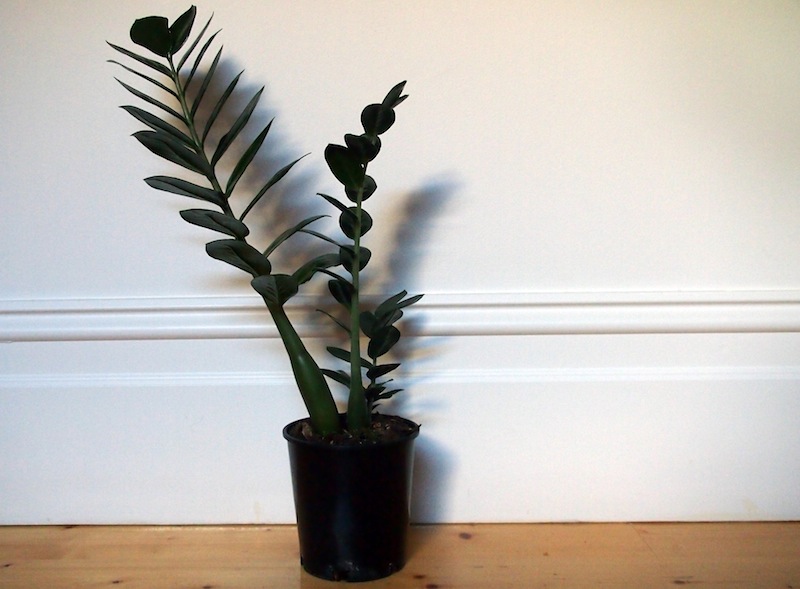 ↑↑ Zanzibar Gem: I love the look of this baby. It’s so glossy and dramatic it doesn’t quite look real. Sometimes when Scout is playing she likes to pretend she’s going to “The Lost City,” and I think when she gets there she will find lots of Zanzibar Gems. Apparently, this plant also “thrives on neglect” when grown indoors, and is almost impossible to kill. Where to put it: just about anywhere. It will tolerate low light and cope when you forget to water it (I don't have a pretty pot for mine yet so it's just on the floor)
↑↑ Zanzibar Gem: I love the look of this baby. It’s so glossy and dramatic it doesn’t quite look real. Sometimes when Scout is playing she likes to pretend she’s going to “The Lost City,” and I think when she gets there she will find lots of Zanzibar Gems. Apparently, this plant also “thrives on neglect” when grown indoors, and is almost impossible to kill. Where to put it: just about anywhere. It will tolerate low light and cope when you forget to water it (I don't have a pretty pot for mine yet so it's just on the floor)
 ↑↑ Sago Palm: Beautiful little fronds curl out from the centre of this palm, a bit like a fern. I like how compact and “designed” it looks, quite classy and predictable (at least my little one is). On the other hand, according to my mother (who knows pretty much everything there is to know about plants) the leaves can be toxic so keep it up high if you have babies in the house. Mine is on the hearth. Where to put it: tolerates low light
↑↑ Sago Palm: Beautiful little fronds curl out from the centre of this palm, a bit like a fern. I like how compact and “designed” it looks, quite classy and predictable (at least my little one is). On the other hand, according to my mother (who knows pretty much everything there is to know about plants) the leaves can be toxic so keep it up high if you have babies in the house. Mine is on the hearth. Where to put it: tolerates low light
 ↑↑ Air plants: There are about a million different types of air plants (ok 650), so describing them is pretty tricky. I have some spiked ones and some fluffy ones and a weird curly one (in the little yellow pot next to the Super Atom above) and some clumps of moss. They look pretty in terrariums, and in decorative dishes, vases... just about anything! People say they don’t need watering but you do have to look after them. I give mine a bath by submerging them in water for an hour once a week, and mist them if the weather is particularly hot or dry. Where to put them: a bright room but not in direct sunlight
↑↑ Air plants: There are about a million different types of air plants (ok 650), so describing them is pretty tricky. I have some spiked ones and some fluffy ones and a weird curly one (in the little yellow pot next to the Super Atom above) and some clumps of moss. They look pretty in terrariums, and in decorative dishes, vases... just about anything! People say they don’t need watering but you do have to look after them. I give mine a bath by submerging them in water for an hour once a week, and mist them if the weather is particularly hot or dry. Where to put them: a bright room but not in direct sunlight
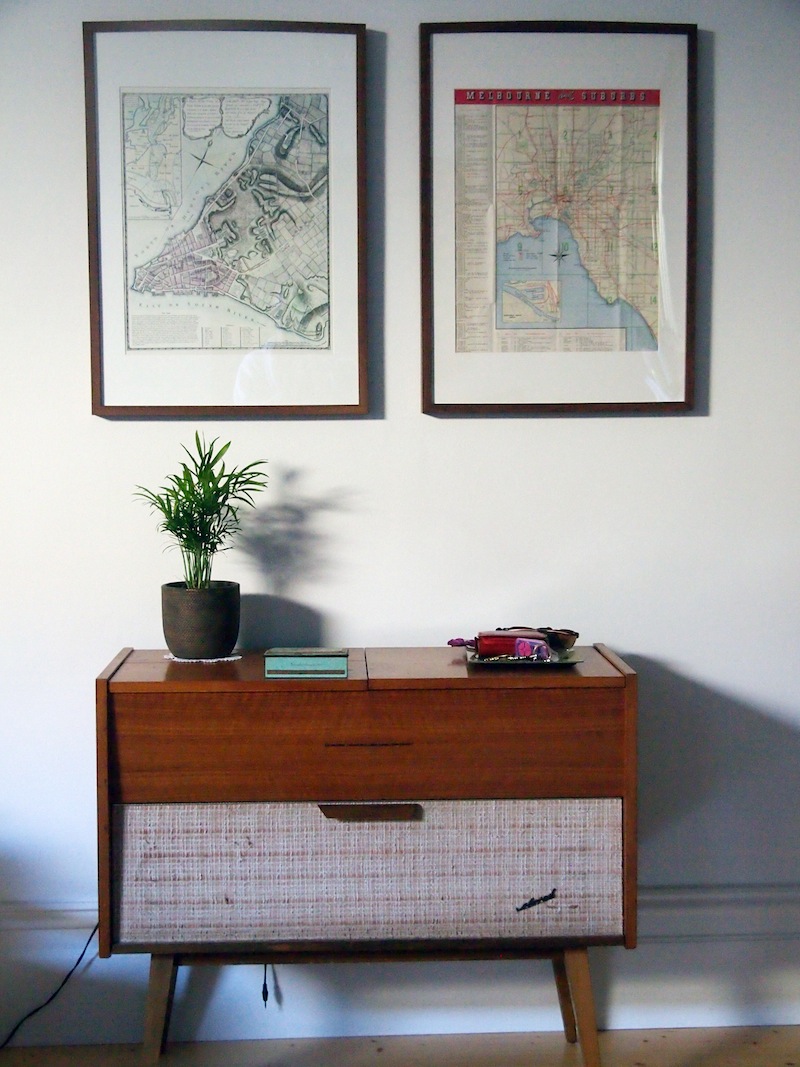 ↑↑ Parlor Palm: The name of this plant is instantly old-school to me. It reeks (the name, not the plant) of Great-Aunt-So-And-So’s sitting room, complete with Iced VoVos and proper teacups in saucers and ceramic ducks on the walls. It’s also graceful and frond-y and looks pretty just about anywhere you choose to place it. Where to put it: anywhere you like, except direct sunlight. Tolerates low-light areas
↑↑ Parlor Palm: The name of this plant is instantly old-school to me. It reeks (the name, not the plant) of Great-Aunt-So-And-So’s sitting room, complete with Iced VoVos and proper teacups in saucers and ceramic ducks on the walls. It’s also graceful and frond-y and looks pretty just about anywhere you choose to place it. Where to put it: anywhere you like, except direct sunlight. Tolerates low-light areas
Some tips about keeping house plants
* If you keep the plants in the plastic pots they come in, that will give you a much wider choice of "pretty pots" to display them in - you don't have to worry about drainage or anything like that. You just slip the plastic pot inside the bigger, pretty one. That also lets you change your mind as many times as you like. If your pretty pot is cloth or porous like some of mine, line it with a plastic bag so it won't be ruined by any moisture
* Rather than walking around the house with a watering can, once a week I take all my plants to the bath or out onto the balcony and give them a big drink together. That way all the water can drain away without risking my floors and furniture. Once the dripping has subsided, just pop them back into their pretty pots
* When I bring each plant back from its bath I try to rotate it around so that different leaves are facing the light. That way it will grow evenly.
* The weekly bath is pretty much all I do for my plants. Apparently some will benefit from liquid fertiliser or something, and I really should read up on that but, generally, if my plants can’t survive with just a watering and a bit of rotation, I don’t have them in the house. I’m busy!
How about you? Are you a plant person? What do you like to grow and what are your top tips?
Wednesday link bonanza
 Happy hump-day, dear friend! Here is a big bonanza of links to get you through to the end of the week, hopefully with a smile and a bit of inspiration.
Happy hump-day, dear friend! Here is a big bonanza of links to get you through to the end of the week, hopefully with a smile and a bit of inspiration.
* I've signed up for a tea swap. Do you want to join me?
* This "balloons and books" baby shower looks amazing! I wish I'd thought of that.
* This quote. Inspired!
* I know Easter is over and we have probably all eaten our entire year's worth of chocolate and sugar, but I still want to try this cake sometime soon. There will be plenty of substitutes for Easter eggs!
* Yelp reviews for newborn babies. These made me laugh, even though my mother-heart was inwardly shouting "Nooooo!"
* There's gardens, and then there are house plants. But did you know you could wear greenery as jewellery? Imagine all that healthy oxygen wafting up your nose all day!
* The Joker Card is a singing birthday card that won't shut up until you destroy it or the battery goes flat. Who do you want to annoy today?
* You are perfectly imperfect
* Heading to New York? These are great tips for getting around and making the most of the city
* Recently a friend with a farm gave us bags and bags and bags of heirloom cherry tomatoes. And I salad-ed and roasted and pasta-sauced and goat-cheese-tarted my heart out, but still I ended up throwing more than half of them out before we could eat them. And THEN I saw this list: 30 things to do with ripe tomatoes. Next year, tomatoes, you are MINE
* The next birthday party I host, I want to bake a really long cake
* Calling all book-lovers and writers: book-spine poetry!
Photo is of Ralph meeting the Easter Bunny for the first time, snapped moments after he was busted stealthily lifting chocolate eggs from the Easter Bunny's basket. It's not relevant to this list, just super-cute.
A face that only a mother could love
 Lately I’ve been thinking about faces that only a mother could love. Or, more precisely, about the origins of that cruel and silly saying, and about how much YOUR mother most likely loves YOUR face*, no matter what your face happens to look like.
Lately I’ve been thinking about faces that only a mother could love. Or, more precisely, about the origins of that cruel and silly saying, and about how much YOUR mother most likely loves YOUR face*, no matter what your face happens to look like.
Your wrinkles? She is SO PROUD of the decades of life and love that you put in to creating those wrinkles. Pimples? Your mother thinks they are perfect. She can’t believe her little baby is so grown up! Oh, your snaggletooth, it just breaks her heart! It is JUST like the snaggletooth that used to peep out from below your grandfather’s wiry moustache, and it is a powerful reminder to her of family and blood and the inescapable links created by DNA.
I am incapable of seeing my children through a fashion editor’s eyes. Of imposing on them those bizarre, objective, unrealistic attributes that are supposed to combine to create “beautiful,” like long legs, wide eyes and full lips. I look at my baby's chubby little thighs and I don’t believe I’ve ever seen anything more delicious. Ralph wears a dopey, droopy-eyed expression when he’s tired that makes me want to envelop him in kisses. Scout has short little legs that will probably stop her from ever being long and lean, and I smile with pride every time I see them, because they are just like mine.
My legs, that I have hated for as long as I can remember being aware of legs.
I spent decades wishing my legs were longer and thinner and smoother and more tanned. Yet now I look at my daughter, who appears to have inherited EXACTLY my legs (DNA, baby!) and, on her, I think they are beautiful. Perfect.
This realisation is changing the way I look at everybody. First of all myself. How can I hate my legs, when I see them on my daughter? She certainly doesn’t hate her legs. (She doesn’t hate mine either!) As far as I can tell she doesn’t think about legs at all, in any capacity other than how good they are at running around, and twirling, and splashing in the bath. If someone was to offer to take Scout’s legs off her and replace them with a longer, leaner pair, I would want to scream at them, and thump them, and have them arrested. How could they infer that ANYTHING about her was less than exactly right, or dare to make her feel that way about herself? But if those legs are perfect on Scout, how can I hate them on myself? When Scout is my age, I will still think her legs are perfect, and want to tear apart anyone who would try to tell her she needed to change herself. Maybe, possibly, probably even, my mother feels the same way about MY legs, right now. Ain’t THAT something to think about!
It is also changing the way I think about other people. Not that I’ve ever been one to walk around judging people on their appearances. I have many faults but, thankfully, that isn’t one of them. But now, when I’m absently people-watching, I’ll play a game in my mind where I'll focus on a feature of someone, like their nose. And I'll imagine what that nose must mean to that person’s mother. How their mother must know that person's nose SO WELL in the interior of her mind, how deeply every contour of it is etched in her heart, and how she would change nothing about it. Not one cell.
And so nowadays I look at all the people around me in all their different shapes and sizes and colours and regular and irregular features and all the rest of them, and I think just how much their mothers must ADORE all of those faces and bodies. It’s actually a really fun and special thing to do. Instantly, the guy at the counter when you’re paying for petrol, the middle-aged woman crossing the road ahead of you, the bored-looking secretary at the doctor’s surgery… all of them, seen through the eyes of their mothers and now me, are perfect.
* I’m aware of course that not all families are the same and not all mothers and children have the same relationships that I enjoy with my own mother and with my own children. Not everyone has known the love of their mother and that is tragic and heartbreaking and, if that is you, I am so, so, sorry. Everyone deserves to be loved, unconditionally, from the very beginning. I hope you know deep love, now. Either way, I want you to know that if I ever look on your face, I will be looking at you and imagining mother-love and I will truly believe that you, too, are perfect.
Photo is by Milada Vigerova, licensed under Creative Commons
The booktown
Fjærland is a tiny, ridiculously picturesque village in Norway. Resting in the shadow of a glacier, at the end of the Fjærlandsfjord, it is home to only 300 souls. That's like a third of the population of my high school.
Fjærland is also a "booktown." Almost every shop in the town sells books and, if you were to put all the bookshelves together, they would stretch for more than four kilometres. Here is a little video about it.
Fjærland - Norway's book town from Fjord Norway on Vimeo.
Bucket list! Will you come with me?
(All images are screen-grabs, taken from the video above)




